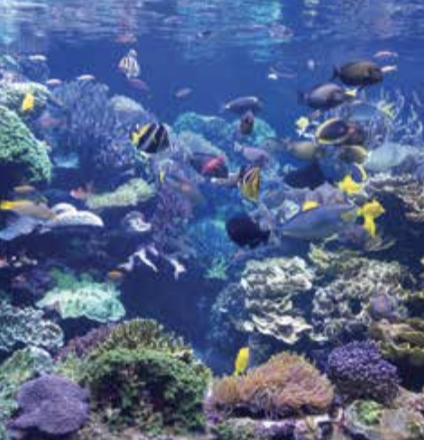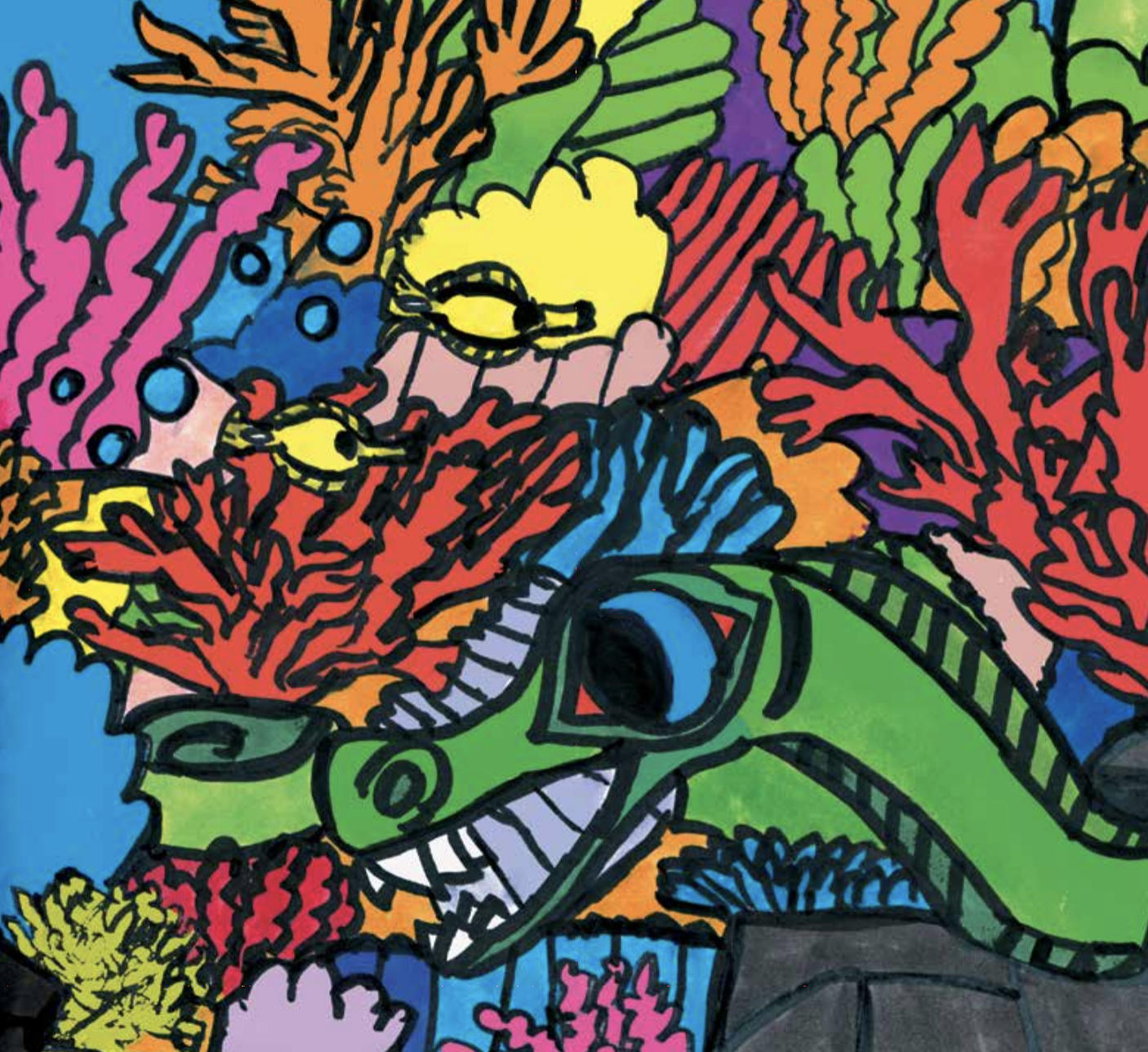Will the Coral Reefs Survive?
By Thornton W. Blease
Travel Ad 2056: Coral paleontologists wanted!
Come investigate the barren, chalkwhite projections that line the warm shorelines. See the blank whiteness. Witness where the beauty of life was once beyond words. Snorkel through the water to experience what was vibrant and inspiring forty years ago.
This ad is not ready to be published, but is being drafted into its final form as we now speak. Can you imagine the horror I felt when the Monterey Bay Aquarium educator informed me that in forty years the coral reefs could possibly be extinct, and we know that extinction is forever…
“Why? How? What can we do?” At the time, I had so many questions, and so few answers, so I began an intensive investigation. What did I find out? Below is an introduction of my findings.
Coral Reefs: Total Demise by the End of the Century?
Abstract The earliest fossil records of hard-shelled organisms, including the coral, appear in the Cambrian Period (544 to 505 million years ago). They are often called the rainforests of the sea, and are important primarily because of the diversity of
species that live within the ecosystem.
Coral reefs, situated about seven miles off the shoreline in warm waters are teeming with tropical fish, sponges, sea anemones, crabs, lobsters, jellyfish, rays, sea turtles, nurse sharks and other sea life. The coral reef community lives in harmony as the species are interrelated in their existence.
But what is a coral reef? Is it dead or alive? A coral is a tiny animal, a marine
polyp that is alive. They are similar in structure to sea anemones and jellyfish with a radially symmetrical body and one opening where they take in food.
There are many different types of coral. Some have tentacles, a few have soft jelly-like bodies, and others have hard and stony skeletons. They are built by millions of tiny polyps, live animals that secrete a skeleton of calcium carbonate called limestone. Within each coral, polyps live microscopic algae called zooxanthellae that utilize
sunlight to manufacture their food through the process of photosynthesis. The algae give the coral reefs their brilliant colors. The polyp and the zooxanthellae symbiotically live in harmony.
Coral reefs have changed profoundly because of the effects of people, and will continue to do so in the foreseeable future. Reefs are subject to many of the same processes that affect other
human-dominated ecosystems. This study presents the significant global threats to coral reefs including human activities: over fishing, deforestation, nutrient enrichment and poor land use causing sediments to run off into the oceans, burning of fossil fuels altering the seawater chemistry leading to ocean acidification, and use of toxic chemicals. These human activities either damage the coral reefs directly or damage them indirectly by adversely modifying interactions with their competitors, predators, pathogens, and mutualists. Specifically, new research reveals that perhaps the most significant factor affecting coral reefs today are the toxic chemicals released by seaweed. This chemical threat may prove to provide a serious setback to efforts aimed at repopulating damaged reefs. Normally, the seaweed is kept in check by herbivorous fish, but overfishing has reduced the population of these plants consumers. Finally, looking at current research and conservation
programs, what is the future of the coral reefs?
Can scientists stop their demise?


